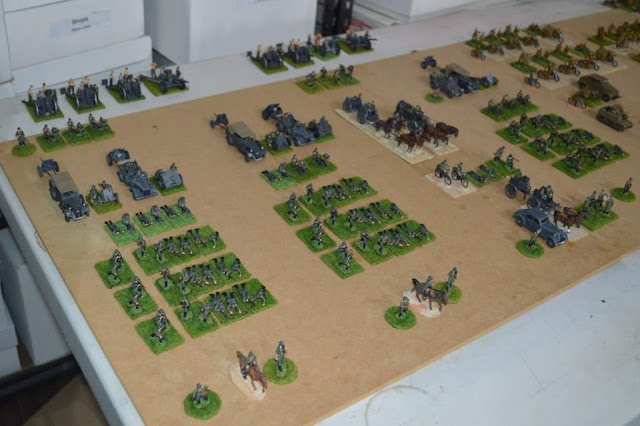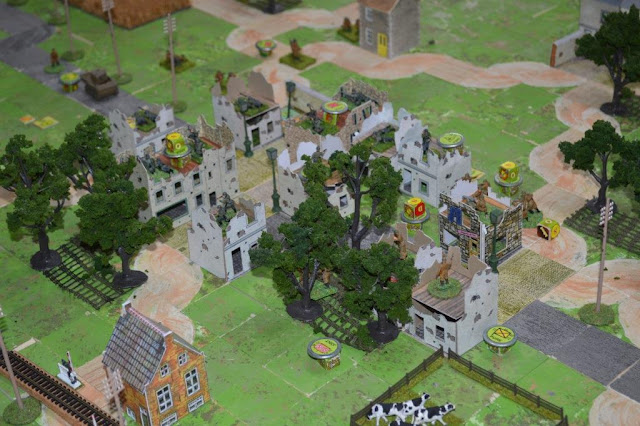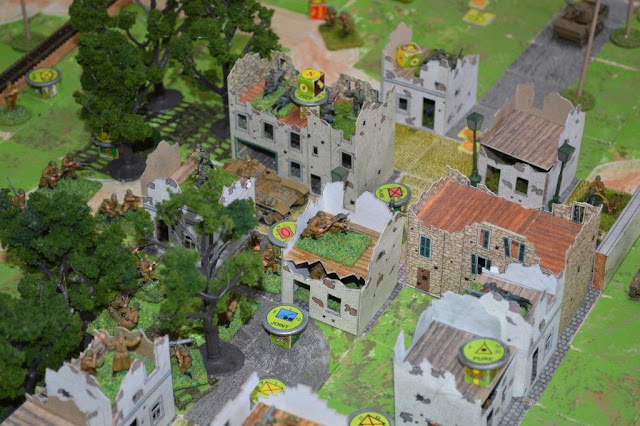Lancers Counterattack
Zwijndrecht, 19 May 1940
Belgian cavalry counter attacks a German crossing of the Scheldt
The Belgian Army is often forgotten in the history of 1940, usually only mentioned in the opening days of the campaign with the fall of Eben Emael and the rapid penetration of the frontier defences and the Ardennes. In reality, the Belgians recovered quickly, regrouped on the KW Line in front of Brussels, and then fought a staged withdrawal in concert with the Allies using their waterways to advantage. One such withdrawal stage included the Scheldt River, but, on the northern part just south of Antwerp, the Germans managed to 'bounce' the defenders and were across before the Belgians were expecting them. This scenario covers the Belgian response as they sent their 2nd Cavalry Division to counter the sudden crossing.
The wargame board represents 6km x 4km with the key objectives being Zwijndrecht and Fort Zwijndrecht.
The Germans start on the board (Sector A) and also have a tiny detachment in Sector B. The Germans have to hold Zwijndrecht and advance to secure Fort Zwijndrecht. Belgian remnants are in Sector 1 and their initial forces are set up to attack in Sectors 2 and 3. Their mission is to hold Fort Zwijndrecht and to clear the Germans from Zwijndrecht. Both sides will receive reinforcements, the Germans from the east and the Belgians from the west. This game has both sides needing to hold an objective and secure another.
Fort Zwijndrecht
They are covering the detachment of LT Paul de Geradon and remnants of his Bicycle Squadron from the 15th Division.
One of the Battalion's companies sets up ready to seize the village of Heide just to the south of Zwijndrecht.
A Belgian element from 15th Division deploys in open order, intending to probe Zwijndrecht from the west.
Artillery deploys in direct support.
The game begins. The Lancers advance on their sweeping left hook, through some 'welcoming' interdiction fire at the crossroads.
The initial action between the two forces centres on the small village of Heide, where both forces collide.
The Lancers have moved all of the way around Zwijndrecht, dismounted, and now approach from the east.
An overall shot of the Lancers moving forward from the east, the 15th Infantry Division stalled in the west, and the fight raging in Heide.
The Germans fall back from Heide but may have delayed the Belgians long enough on that approach to allow for reinforcements to arrive.
The Germans approach Zwindrecht from the NW, avoiding the Belgian company blocking the direct route down the railway line.
Tough fighting in the town, with the Belgians committing their tank platoon. The Germans are just hanging on.
The German reinforcements surge forward. They frantically move an anti-tank gun forward to contest the advancing Belgian armour.
A second German infantry battalion arrives to back up the first reinforcements. Weight of numbers are now in the German's favour.
The Belgian armour swings around the northern side of Zwijndrecht to try and delay the German reinforcements.
While the first reinforcements confront the tanks, the second German battalion attempts to relieve their comrades in Zwijndrecht.
Some very timely and accurate artillery, and some fine shooting by the anti-tank gunners, halts the Belgian armour.
A very interesting and enjoyable game with both sides attacking and defending. Both sides had to pause to regroup, often reorientate and change plans in-stride. Always fun to put some unusual troops into action such as the Belgian light armour and its motorcycle cavalry.
This game is available as a free down-load here: Scenario 164. Free Download to preview Blitzkrieg in the West 1940 Volume IV 42 Wargame Scenarios Belgian vs Germans - MGK Military Simulations | Wargame Vault
It is part of my wargame series covering the campaign in the west, 1940 and is included in the volume featuring the Belgian Army's experience: Blitzkrieg in the West 1940 Volume IV 42 Wargame Scenarios Belgians vs Germans - MGK Military Simulations | Wargame Vault
































































